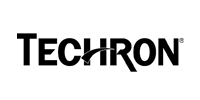Tips for Fleet maintenance


When it comes to fleet maintenance, a preventative course of action is an effective one as it can save you a lot of money. A vehicle that is well-maintained burns less fuel, has fewer breakdowns and helps reduce your operating costs.
By taking a proactive approach, you can halt problems before they escalate into safety hazards. Given below are some points to keep your fleet in tip-top condition:
1. Carve out the role of a fleet inspector
A specific inspection schedule is among the first steps to maintaining a healthy fleet. Preventive maintenance like oil changes, tire changes, and engine cleaning must be carried out regularly. If the cost or effort of maintaining this schedule is too astronomical, consider hiring a dedicated, experienced vehicle maintenance provider who will take care of these things for you. This will help you focus on managing your business.
2. Receive regular driver reports
Always maintain regular communication with the drivers and task them with checking things like oil and tire pressure while on the road with innovative tools. This will help your drivers develop a set of best practices and form productive working relationships with you and the maintenance team or contractor.
3. Ensure your vehicles are up for it
This is by far a key tip because under-speccing could lead to faster wear and tear, while over-speccing will incur unnecessary costs. When purchasing a vehicle or assigning tasks, decide what your vehicle will be carrying and its operating conditions so you get the most efficient use out of it.
4. Take care of your vehicle’s tires
Tire pressure plays a huge part in the overall driving experience. It affects handling, fuel economy, and general wear and tear. However, ensure that tire wear won’t be consistent across your fleet. Weather, road surface, and the individual’s driving can all impact how quickly tires degrade. Your fleet inspector must always test the pressure before and after a trip. Ensure that the drivers check it before the journey, especially during longer trips. Besides pressure checks, your drivers and fleet manager should monitor overall tire degradation.
5. Keeping your vehicles clean is non-negotiable
Keeping your vehicles washed and polished has more benefits than one. Besides making your company look professional, keeping the exterior of your vehicles clean also helps you catch issues like rust and deterioration early. Nurture a relationship with a fleet maintenance provider. They can take on vehicle cleaning, leaving you free to focus on running other areas of your business. Another advantage is that they are professionally trained to spot issues early on.
6. Ensure your drivers are always well-prepared
Always ensure that the drivers can drive efficiently and maintain their vehicles, including mechanical tasks like checking tire pressure and tread wear. Stressing the importance of careful, compliant driving also means they’re less likely to become involved in a road accident, which could cause vehicle downtime and costly repairs, or, in worse cases, a lawsuit. Beyond this, drivers must realize the importance of regular maintenance and careful driving.
7. Always plan ahead
Failing to plan could leave you behind in the rat race. Besides negatively affecting business growth, failing to create a scalable business model will damage your bottom line. Develop a relationship with a service provider with the capacity to maintain and manage larger fleets. Working with a dedicated professional can help reduce the likelihood of downtime due to poor vehicle maintenance, leaving you with more time to focus on growing your business.
8. Invest in Fleet Management Software
Investing in telematics tools and technology can help increase productivity by up to 15%, along with financial savings and reduced fuel expenditure of up to 10%. Management apps can alert you or your fleet inspector of things like vehicle-damaging driving and issue warnings to individual drivers automatically, improving their driving and saving you money that would have otherwise been spent on upkeep. Whether you’re a small business or run a fleet of thousands of vehicles, taking a preventative approach to maintenance will always save time and money in the long run.





























